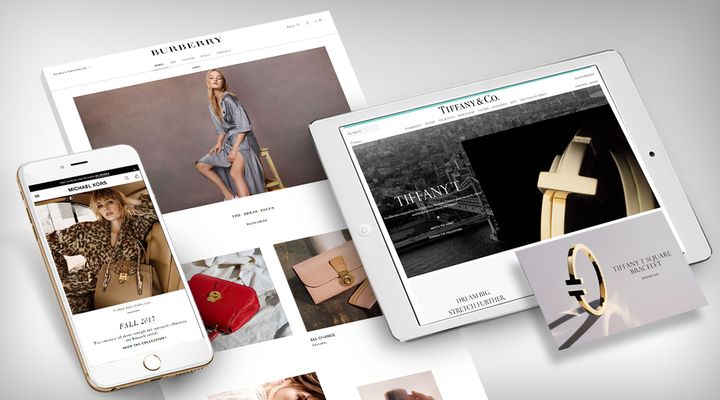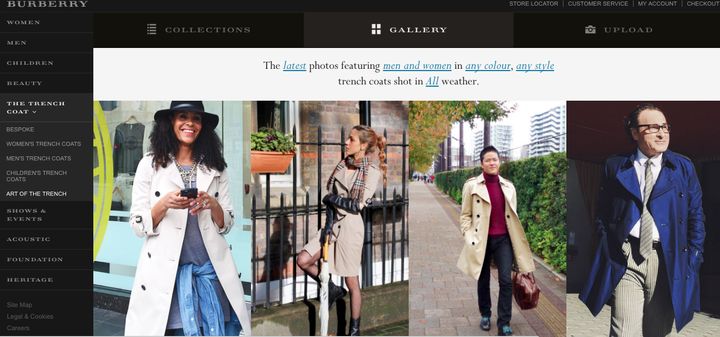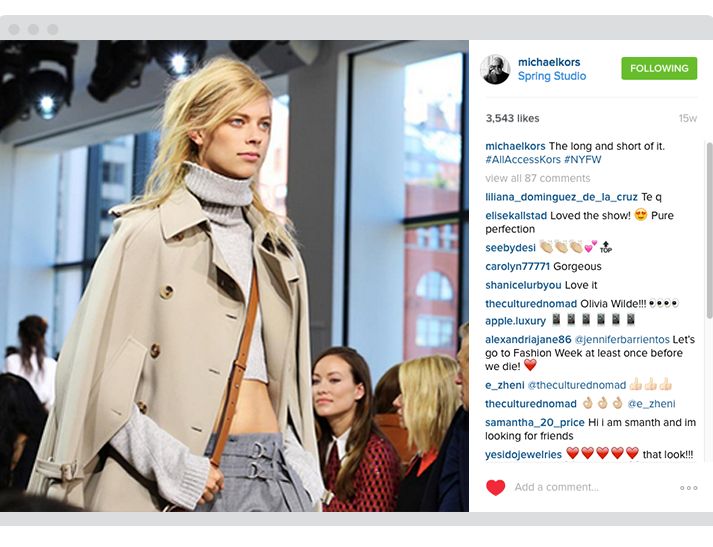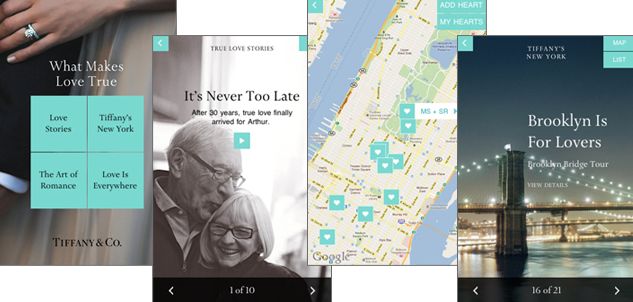
Sophistication, opulence, timeless: these words are the cornerstones of luxury brands. But how, in fact, does a brand remain timeless in the digital age?
It evolves its marketing strategy to meet the changing emotional and physical landscape of its consumers, and it uses modern technology to conquer new platforms and expand brand narrative along the way.
According to McKinsey, 40% of all luxury goods purchase decisions are influenced by what consumers see and hear online. That means, in an industry with more than $280 billion in sales last year, online-influenced purchases accounted for more than $100 billion in revenue.
Top brands like Burberry, Tiffany, and Louis Vuitton are all tapping into expanding markets, including ecommerce and social media shoppers, and they’re using compelling digital media strategies to do it. Here, we take a look at some of the most important factors to ensure that your high-end brand’s marketing strategy is going to thrive in the digital landscape.
1. Modernize your brand identity.
Luxury brands establish legacies and remain timeless because they know how to blend heritage with modern desires. In order to remain relevant, brands have to continuously find new means of emotionally connecting with consumers. This means approaching new platforms, new styles, and new influencers to keep a brand’s identity rooted in the modern world. And for today’s luxury brands, staying firmly rooted in the modern market requires a well-established presence in the digital sphere.
Take for example, the iconic British brand Burberry. Throughout time, the brand has established a democratic and fashion forward identity for itself. One of its pillar products—the trench coat— is a staple fashion forward item, worn and stylized by royalty, soldiers, and celebrities throughout time. So what better way to marry the traditional Burberry heritage with modern consumers than by launching a social media campaign, relying on user generated content?
Alas in 2009, the Art of the Trench site was born. The stand-alone site allowed customers to submit photos of themselves sporting their Burberry trench coats on streets all over the world. Photos were posted on the site, effectively replacing models with everyday consumers. But to boost engagement even further, Burberry allowed users to share content via Facebook, Twitter, and email.
One year after the Art of the Trench was launched, Burberry’s Facebook following grew to more than one million users, the largest following amongst luxury brands at the time. What’s more, the brand’s ecommerce sales grew by 50%. And data showed that the Art of the Trench site yielded higher conversion rates than any other source for the brand.
Burberry’s campaign showed brands worldwide that in order to succeed in the digital age, one now has to go beyond a beautifully designed homepage. Establishing an identity in the digital sphere depends on engaging with consumers in an emotionally charged way.

Burberry’s Art of the Trench website is still very much alive today.
2. Aspire.
Burberry’s Art of the Trench campaign took their marketing strategy one step further by appealing to new aspirational markets. Part of the allure for luxury brands will always be exclusivity. But in the modern era, consumers are more accessible than ever before, and they crave products and experiences that are equally accessible. This means that luxury brands now need to find new ways of balancing exclusivity with aspirational consumers.
The Art of the Trench campaign reached a new, younger demographic. Many of the campaign’s young followers were not traditional consumers, but rather hopeful “aspirationals,” drawn in by the interactivity of the campaign. In effect, showcasing real men and women donning the brand on real streets around the world, gave brand hopefuls a sense of possibility. The campaign gave them a level of opulence and grandeur to aspire to.

Burberry’s Art of the Trench Facebook page is still capturing the hearts of aspirationals.
3. Reward loyalists.
While aspirational marketing is important in the digital era, it’s still imperative that luxury brands maintain and value their sense of exclusivity. Part of being emotionally effective in the digital realm depends on heightening excitement and creating buzz around the brand. Creating loyalty rewards and perks for high spending consumers can help build excitement around the concept of exclusivity.
Contrary to popular belief, email marketing is far from dead. In fact, it’s an important tool for luxury brands. By creating email lists from information provided by shoppers, companies can implement rewards and perks for brand loyalists. Say, for example, once a consumer spends a certain amount of money, they reach a new level of VIP status, allowing them to get sneak-peeks at products before they hit the market. Or perhaps they get invited to special events or product launches. This type of reward program maintains exclusivity and builds excitement around the possibility of attaining a new, even more elite status within the brand.
4. Socialize.
The VIP reward tactic is just one way for luxury brand’s to inspire a sense of belonging amongst consumers. But in the digital era, social media takes the cake in terms of community building and belonging. Thus, it’s essential that all luxury brands engage with consumers on social media. What’s more, utilizing social doesn’t require big bucks. In fact, luxury brands are now moving past paid media by capitalizing on viral content, creating hashtags, and going live to offer behind-the-scenes access.
By increasing interactivity through open sharing, the Burberry Art of the Trench campaign amplified the brand’s social media presence without exerting any extra effort. Instead, it capitalized on the content that had already been created, partly by users, by allowing those users and followers to help circulate the campaign on the web. Trusting your brand’s social community to generate content and help with promotion instills a sense of value and purpose amongst users.

Michael Kors does hashtags right and has built a massive following on Instagram, as featured on Curalate.
5. Personalize.
The Art of the Trench campaign carried out one final, crucial strategy for luxury marketing in the digital age: user generated content. New interfaces are now allowing users to experience luxury goods and products in ways that were never before attainable. These experiences are the deeply emotional and engaging ones that today’s consumers crave.
Romantic luxury jeweler Tiffany & Co. is creating these experiences with its mobile app What Makes Love True. Upon launch of the app, a short romantic film plays, showcasing different marriage proposals from couples throughout history. From there, users can browse a selection of audio-based love stories; a guide to New York City’s best gardens, museums, and fine dining restaurants; a playlist of romantic songs and movies; and an interactive map of the world, which lets users create tags for their most romantic memories around the globe. User generated experiences, such as Tiffany’s world map, are enabling users to connect with brands in highly personal and emotionally charged ways.

Tiffany’s What Makes Love True App, as featured on Adtensionspan.
The allure for luxury brands will always be the intangible emotions—the elusive exclusivity—which people hope to attain through products. Luxury brands depend on evolving this narrative in the digital realm in order to reach and connect with modern consumers on an emotional level. The rise of the digital era is accompanied by a new generation of consumers; they are a generation more accessible than ever before, and they demand content that is equally as accessible. Even in a realm where the physical and emotional products aren’t easily attainable, virtual experiences and content can be. It’s now up to the brands to deliver both.